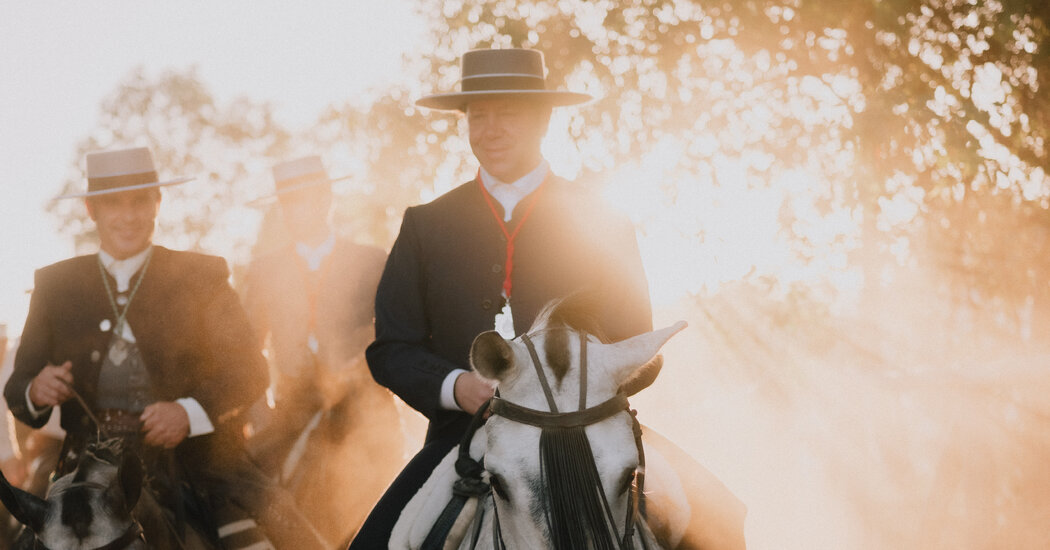“You can’t wear that flamenco dress for the El Rocío pilgrimage, Bonita,” Maria Cárdenas, our Airbnb host, said with a laugh. “You’ll die in the heat.”
She pinched the thick red fabric between her thumb and held it up to my face like a specimen. “You see? Heavy tight dresses like this are made for the festivals at the bullring in Seville city,” she explained. “You need lightweight stretchy polyester for pilgrimages — for riding, walking, dancing, siestas in the grass.”
The El Rocío pilgrimage is a high-octane religious spectacle — a multiday annual fiesta, held in Andalusia, the southernmost region in Spain — of flamenco dresses, caravans and religious fervor that seems to grow ever stronger, despite the ever-waning influence of the Catholic Church.
Participants can spend months in preparation: planning menus, hiring tractors, arranging for caravans. It also requires the selection of a dress that permits the wearer to relieve herself behind a bush while exuding all the elegance of Goya’s Duchess of Alba.
Having studied for a year in Seville in 2012, Kevin, my collaborator, has long dreamed of returning to document the pilgrimage of El Rocío, which was canceled for two consecutive years during the pandemic. My connection to Spain is more recent: I moved to Mallorca last year after deciding that life is too short not to live on a Mediterranean island. Kevin and I regularly work together on travel assignments, and when he told me about El Rocío, it was an easy yes, because the best way to get to know a new country is to party with it.
Although we were documenting the 2022 pilgrimage (this year’s will be held at the end of May), we were also participating in a celebration. Andalusia — famed for flamenco dancing, cowboy culture and pilgrimages — has a distinct and seductive identity that people in the south of Spain are rightly proud of.
The El Rocío pilgrimage is arguably the most potent visual representation of Andalusian culture, and it’s this, as much as religious zeal, that propels hundreds of thousands of pilgrims toward the shrine of the Virgin in the village of El Rocío. Some travel on foot, others atop elaborately decorated caravans. Many are on horseback: stiff-backed and spiffily attired riders in wide-brimmed hats, high-waisted paseo trousers and cropped guayabera jackets.
On our first day, Kevin and I wandered through Doñana National Park, some 40 minutes south of central Seville, foraging for the pilgrims…
Click Here to Read the Full Original Article at NYT > Travel…
